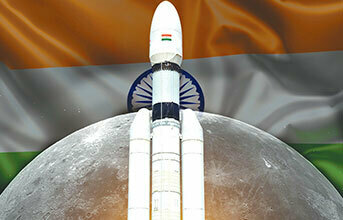
Chandrayaan-3's successful lunar touchdown is a momentous occasion that not only swells Indians with pride but also carries human ambition beyond its terrestrial bounds. As Chandrayaan-3 takes a giant leap for mankind, let's not forget the small steps of manufacturing brilliance that got it there. The magazine ventured into conversations with three entities of brilliance and a story of innovation and diligence unfolded, revealing the threads that have weaved the success of this mission.
This article will reveal what went behind the making of India's most triumphant mission, which has made a permanent place in the books of history
The Building Blocks of Chandrayaan 3
Walchandnagar Industries (WIL), Himson Industrial Ceramic (HIC) and Larsen & Toubro (L&T) shine as key contributors to India's space ventures. L&T and WIL's experience with India's space programme spans over half a century, with WIL involved in manufacturing components for ISRO's Chandrayaan 1, Chandrayaan 2, and more, while HIC's role traces back to 1994.
Nimesh Bachkaniwala, MD and CEO, Himson Industrial Ceramics, stated, "Each rocket that fires into space contains oxide based ceramic components that are manufactured at our plant, and so is the case for Chandrayaan-3."
Chirag C. Doshi, MD and CEO, Walchandnagar Industries Ltd., shared an optimistic glimpse into the future, revealing, "We will also play a role in the upcoming Gaganyaan Mission." Expanding on their accomplishments, Chirag told The Machinist, "It was at WIL's exclusive facility that the critical booster segments ‘S200' used in the LVM3 launch vehicle of the Chandrayaan-3 mission were manufactured and proof pressure tested." He explained that the LVM3 launcher, made by the company, employs two solid propellant strap-on boosters to generate the necessary thrust for lift-off.
Arun Ramchandani, Executive Vice President and Head of Defence at Larsen & Toubro, provided an overview of the company's role. He shared, "We were involved in this mission starting from manufacturing of flight hardware to mission tracking."
With respect to manufacturing, L&T supplied critical booster segments for the mission. These segments included the head end segment, middle segment, and nozzle bucket flange, all with a diameter of 3.2 metres, manufactured and proof pressure tested at L&T's Facility in Powai. Additionally, the company supplied ground and flight umbilical plates, deck panels, and other mechanical hardware for the mission
Talking about assembly and mission tracking, Ramchandani revealed, "Post-launch, our C-and S-Band Precision Tracking Radars supported in tracking the smooth launch till the separation of the payload from the Launch Vehicle. The Deep Space Network (DSN) Antennae, also manufactured by us helped two-way communication with the payload during its journey beyond the Earth to the Moon, lunar orbiting, safe landing of the Vikram Lander, and for further data collection by the Rover."
Bachkaniwala shared that as HIC, they provide ISRO with components known as ‘Squibs.' Where launch temperatures can surpass 3,000°C at the rear end, safeguarding delicate wiring becomes imperative. He explained that a squib is a heat-resistant ignition cover, which not only acts as an igniter but also serves as an insulator, cocooning the craft. Thus, amidst the chaos of the launch, the squib ensures that the craft remains unscathed by the flames of the blast.
Continued on Page 2


























